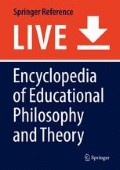References
Abutalebi, J., Della Rosa, P. A., Green, D. W., Hernandez, M., Scifo, P., Keim, R.,…Costa, A. (2012). Bilingualism tunes the anterior cingulate cortex for conflict monitoring. Cerebral Cortex, 22, 2076–2086.
Baker, C. (2011). Foundations of bilingual education. Tanowanda: Multilingual Matters.
Bauer, E., & Colomer, S. E. (2015). Biliteracy development among African American and Latina/o emergent bilinguals in a two-way immersion classroom. Paper presented at the annual meeting of the International Congress of Qualitative Inquiry, Urbana-Champaign.
Bauer, E., Presiado, V., & Colomer, S. E. (in press). Writing through partnership: How emergent bilinguals foster translanguaging. Journal of Literacy Research.
Blackledge, A., & Creese, A. (2010). Multilingualism. London: Continuum.
Carlson, S. M., & Meltzoff, A. N. (2008). Bilingual experience and executive functioning in young children. Developmental Science, 11, 282–298. doi:10.1111/j.1467-7687.2008.00675.x.
Cummins, J. (1979). Cognitive/academic language proficiency, linguistic interdependence, the optimum age question, and some other matters. Working Papers on Bilingualism, 19, 121–129.
Dworin, J. E. (2003). Insights into biliteracy development: Toward a bidirectional theory of bilingual pedagogy. Journal of Hispanic Higher Education, 2(2), 171–186. doi:10.1177/1538192702250621.
Fortune, T., Tedick, D., & Walker, C. (2008). Integrated language and content teaching: Insights from the language immersion classroom. In T. Fortune & D. Tedick (Eds.), Pathways to multilingualism: Evolving perspectives on immersion education (pp. 71–96). Clevedon: Multilingual Matters, Ltd.
García, O. (2009). Bilingual education in the 21st century: A global perspective. West Sussex: Wiley-Blackwell.
Grosjean, F. (1989). Neurolinguists beware! The bilingual is not two monolingual in one person. Brain and Language, 36, 3–15. doi:10.1016/0093-934X(89)90048-5.
Hopewell, S., & Escamilla, K. (2014). Biliteracy development in immersion context. Journal of Immersion and Content-Based Language Education, 2(2), 181–195.
Hornberger, N. (1989). Continua of biliteracy. Review of Educational Research, 59(3), 271–296.
Hornberger, N. (2004). Continua of biliteracy and the bilingual educator: Educational research in practice. International Journal of Bilingual Education and Bilingualism, 7(2&3), 155–171.
Jiménez, R., García, G. E., & Pearson, P. D. (1996). The reading strategies of bilingual Latina/o students who are successful English readers: Opportunities and obstacles. Reading Research Quarterly, 31(1), 90–112.
Kroll, J. F., & Bialystok, E. (2013). Understanding the consequences of bilingualism for language processing and cognition. Journal of Cognitive Psychology, 25, 497–514.
Lindholm-Leary, K., & Howard, E. (2008). Language development and academic achievement in two-way immersion programs. In T. W. Fortune & D. J. Tedick (Eds.), Pathways to multilingualism: Evolving perspectives on immersion education (pp. 177–200). Clevedon: Multilingual Matters, Ltd.
Velasco, P., & García, O. (2014). Translanguaging and the writing of bilingual learners. Bilingual Research Journal: The Journal of the National Association for Bilingual Education, 37(1), 6–23. doi:10.1080/15235882.2014.893270.
Vygotsky, L. S. (1978). Mind and society. Cambridge, MA: Harvard University Press.
Weinreich, U. (1953). Languages in contact: Findings and problems. The Hague: Mouton.
Williams, C. (1996). Secondary education: Teaching in the bilingual situation. In C. Williams, G. Lewis, & C. Baker (Eds.), The language policy: Taking stock (pp. 193–211). Llangefni: CAI.
Wolfersberger, M. (2003). L1 & L2 writing process and strategy transfer: A look at lower proficiency writers. TESL-EJ, 7(2). Retrieved from http://www.tesl-ej.org/wordpress/issues/volume7/ej26/ej26a6/
Wong-Fillmore, L. (2000). Loss of family languages: Should educators be concerned? Theory Into Practice, 39(4), 203–210. doi:10.1207/s15430421tip3904_3.
Author information
Authors and Affiliations
Corresponding author
Editor information
Editors and Affiliations
Rights and permissions
Copyright information
© 2016 Springer Science+Business Media Singapore
About this entry
Cite this entry
Bauer, E.B., Colomer, S.E. (2016). Biliteracy. In: Peters, M. (eds) Encyclopedia of Educational Philosophy and Theory. Springer, Singapore. https://doi.org/10.1007/978-981-287-532-7_113-1
Download citation
DOI: https://doi.org/10.1007/978-981-287-532-7_113-1
Received:
Accepted:
Published:
Publisher Name: Springer, Singapore
Online ISBN: 978-981-287-532-7
eBook Packages: Springer Reference EducationReference Module Humanities and Social SciencesReference Module Education

